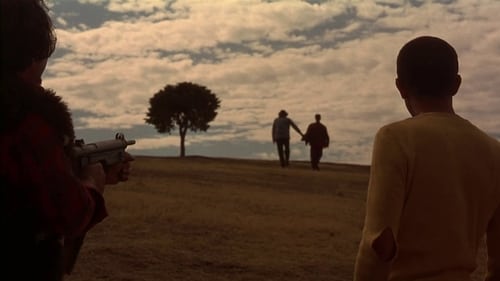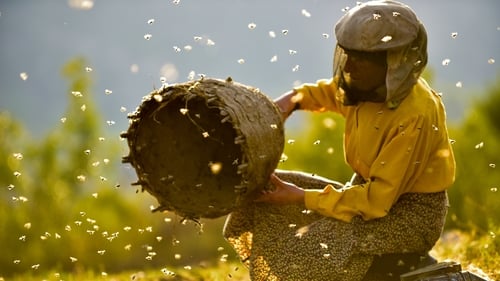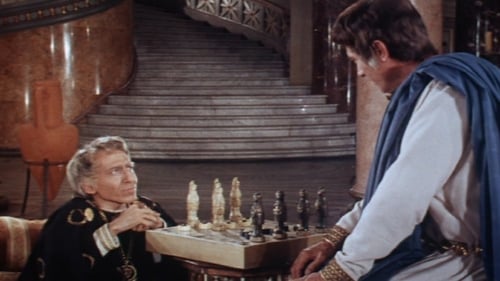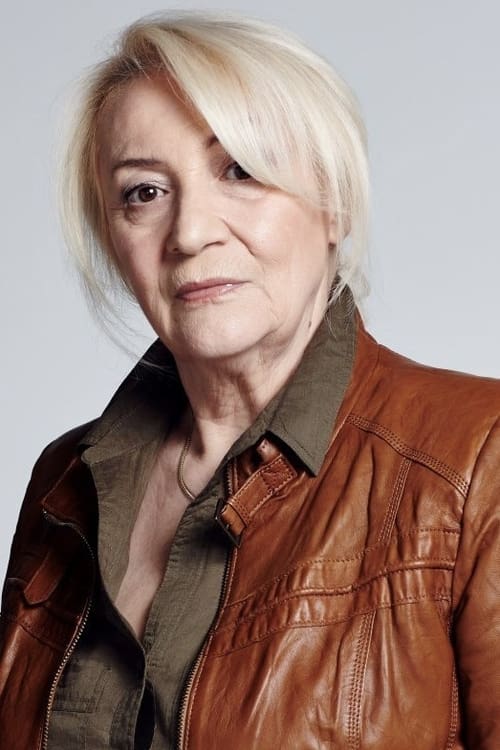Misery (1975)
Genre : Drama, History
Runtime : 1H 57M
Director : Kiril Cenevski
Synopsis
The story takes place in Ohrid, at the end of XI century. Slavic population gives resistance to Byzantium and the Christian dogma leads to the persecutions and murders. The villages are plagued with outbreak of smallpox, and all the people with the symptoms were thrown into the lime. The film follows the fate of Abraham's family as the story of survival in the Balkan intersections.

The circularity of violence seen in a story that circles on itself. In Macedonia, during war in Bosnia, Christians hunt an ethnic Albanian girl who may have murdered one of their own. A young monk who's taken a vow of silence offers her protection. In London, a photographic editor who's pregnant needs to talk it out with her estranged husband and chooses a toney restaurant.

After the death of his father Murat II, Mehmet II ascends to the Ottoman throne. After braving internal and external enemies, he decides to complete what he was destined to do: Conquer Constantinople.

When nomadic beekeepers break Honeyland’s basic rule (take half of the honey, but leave half to the bees), the last female beehunter in Europe must save the bees and restore natural balance.

As Macedonia faces its difficult transition, a boy escapes into a world of his own creation.

This is a documentary film about the land and people which will never restore their power of the past. A story about negations and many historical moments are enveloped in the veil of secret. Through the modern personalities and archives "The Last Macedonian from Macedonia" approaches to the truth revealing the never spoken moments and linking the past, present, but also the future. The film was shot on locations in Bitola and its surroundings.

A group of crotchety codgers attempt to revive the punk-rock band they all played in 17 years earlier in "Punk Is Not Dead".

A promising debut feature tells the story of a young woman returning from America to discover the realities of life in Macedonia, that looks as if it will explode with all the soldiers, corrupt crooks and terrorist idealists.

Early Balkan footage.

A Roman noble, Cethegus, tries to start a war, setting the Ostrogoths and their Queen, Amalasuntha, against the Byzantine Emperor Justinian; Cethegus wants to swoop in after they have destroyed each other and create a new Roman Empire from their combined kingdoms; however, he does not factor into his plans the vagaries of love and the personal integrity of the people in both kingdoms.

After her son's tragic death, Helena abducts her employee, Lucian, and travels with him and her husband to scatter her son's ashes in Macedonia. Meanwhile, Lucian's lover struggles to provide for their son and break free from her dictatorial father.

Serafim is a vampire hunter - who wanders through Macedonian villages and destroys the vampired dead man for money. His apprentice is young fellow named Fidan, who Serafim teaches the rough and dangerous vampire craft, along with the alphabet and the insecure life in Macedonia. Vampire man and his student in their surroundings get in struggle with: Macedonian vampires, Turkish Authority and with Komiti (Macedonian Revolutionaries), also with Avdzi - Taburi (paid hunters of Komiti). Fidan experiences damnation of the vampire skill, who doesn't know if Serafim is a God's angel or servant of Devil.

Early Balkan footage.

Early Balkan footage.

A simple story, but larger than life portrayal of the universal human saga represented through Dionis, a retiring biology professor, his wife and his fantasy of turning his unusual car collection into a museum in a small uneventful town.

A group of Macedonian partisans are hiding away in the mountains from Bulgarian fascist authorities that occupy Macedonia.

A six minute film of the funeral of the murdered Metropolitan Emilianos of Grevena, of which all has been lost, save for 17 seconds. Emilianos was murdered on October 1st, 1911.

Early Balkan footage.

The AHRC funded Objects of Immersion created the Living Room of the Future (LROTF) to highlight the future potential of Object Based Media (OBM). OBM allows programme content to change according to unique interactions with audiences. The ‘objects’ in OBM refer to the different assets within a given programme. These include large objects like audio and video used to construct a scene in a drama, and small objects, like an individual frame of video, a caption, or a signer. By breaking down a piece of media into separate objects, attaching meaning to each object, and describing how they can be semantically rearranged, a programme can change to reflect an individual viewer’s unique context.

Early Balkan footage.















